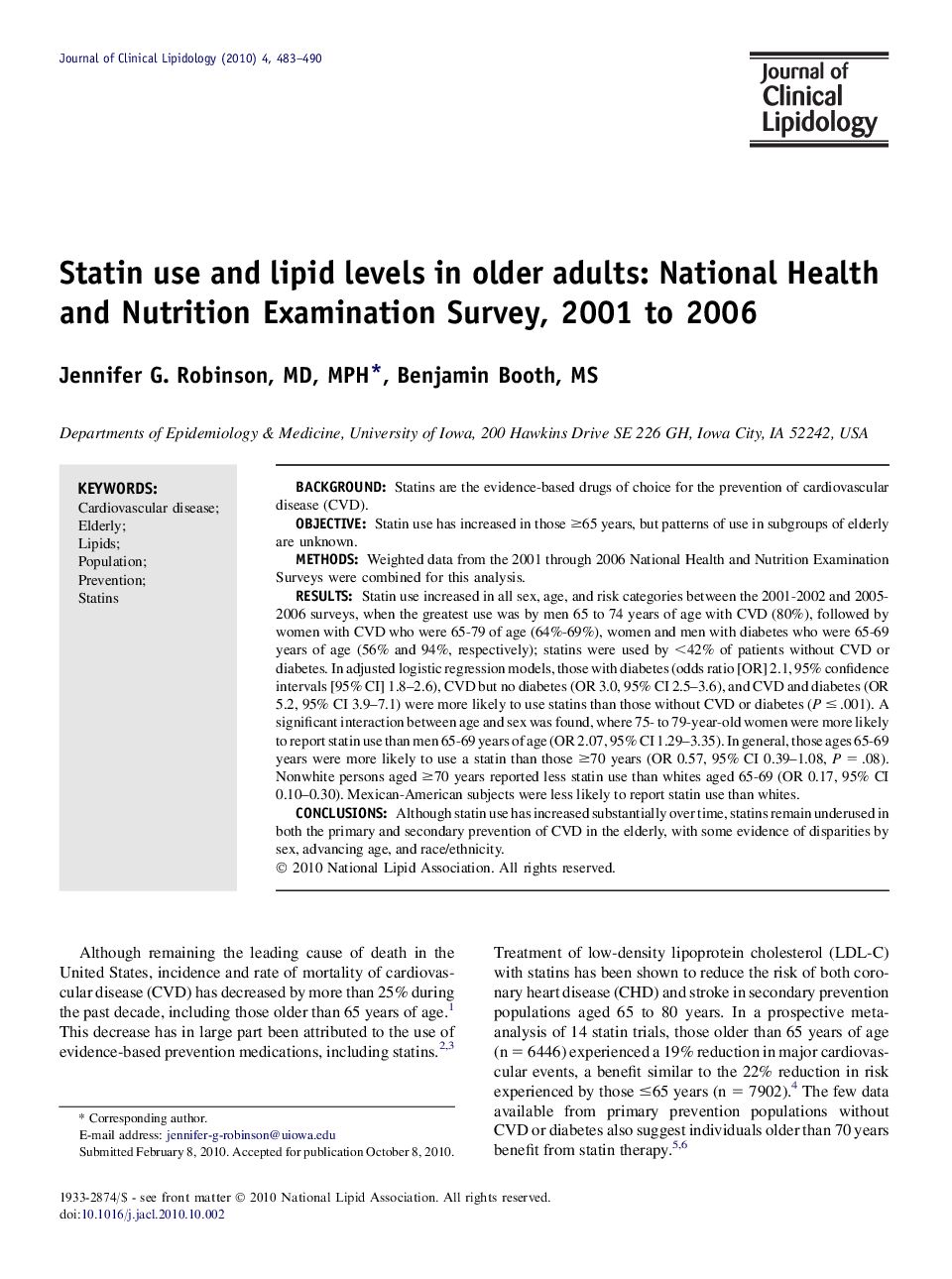| Article ID | Journal | Published Year | Pages | File Type |
|---|---|---|---|---|
| 2966145 | Journal of Clinical Lipidology | 2010 | 8 Pages |
BackgroundStatins are the evidence-based drugs of choice for the prevention of cardiovascular disease (CVD).ObjectiveStatin use has increased in those ≥65 years, but patterns of use in subgroups of elderly are unknown.MethodsWeighted data from the 2001 through 2006 National Health and Nutrition Examination Surveys were combined for this analysis.ResultsStatin use increased in all sex, age, and risk categories between the 2001-2002 and 2005-2006 surveys, when the greatest use was by men 65 to 74 years of age with CVD (80%), followed by women with CVD who were 65-79 of age (64%-69%), women and men with diabetes who were 65-69 years of age (56% and 94%, respectively); statins were used by <42% of patients without CVD or diabetes. In adjusted logistic regression models, those with diabetes (odds ratio [OR] 2.1, 95% confidence intervals [95% CI] 1.8–2.6), CVD but no diabetes (OR 3.0, 95% CI 2.5–3.6), and CVD and diabetes (OR 5.2, 95% CI 3.9–7.1) were more likely to use statins than those without CVD or diabetes (P ≤ .001). A significant interaction between age and sex was found, where 75- to 79-year-old women were more likely to report statin use than men 65-69 years of age (OR 2.07, 95% CI 1.29–3.35). In general, those ages 65-69 years were more likely to use a statin than those ≥70 years (OR 0.57, 95% CI 0.39–1.08, P = .08). Nonwhite persons aged ≥70 years reported less statin use than whites aged 65-69 (OR 0.17, 95% CI 0.10–0.30). Mexican-American subjects were less likely to report statin use than whites.ConclusionsAlthough statin use has increased substantially over time, statins remain underused in both the primary and secondary prevention of CVD in the elderly, with some evidence of disparities by sex, advancing age, and race/ethnicity.
